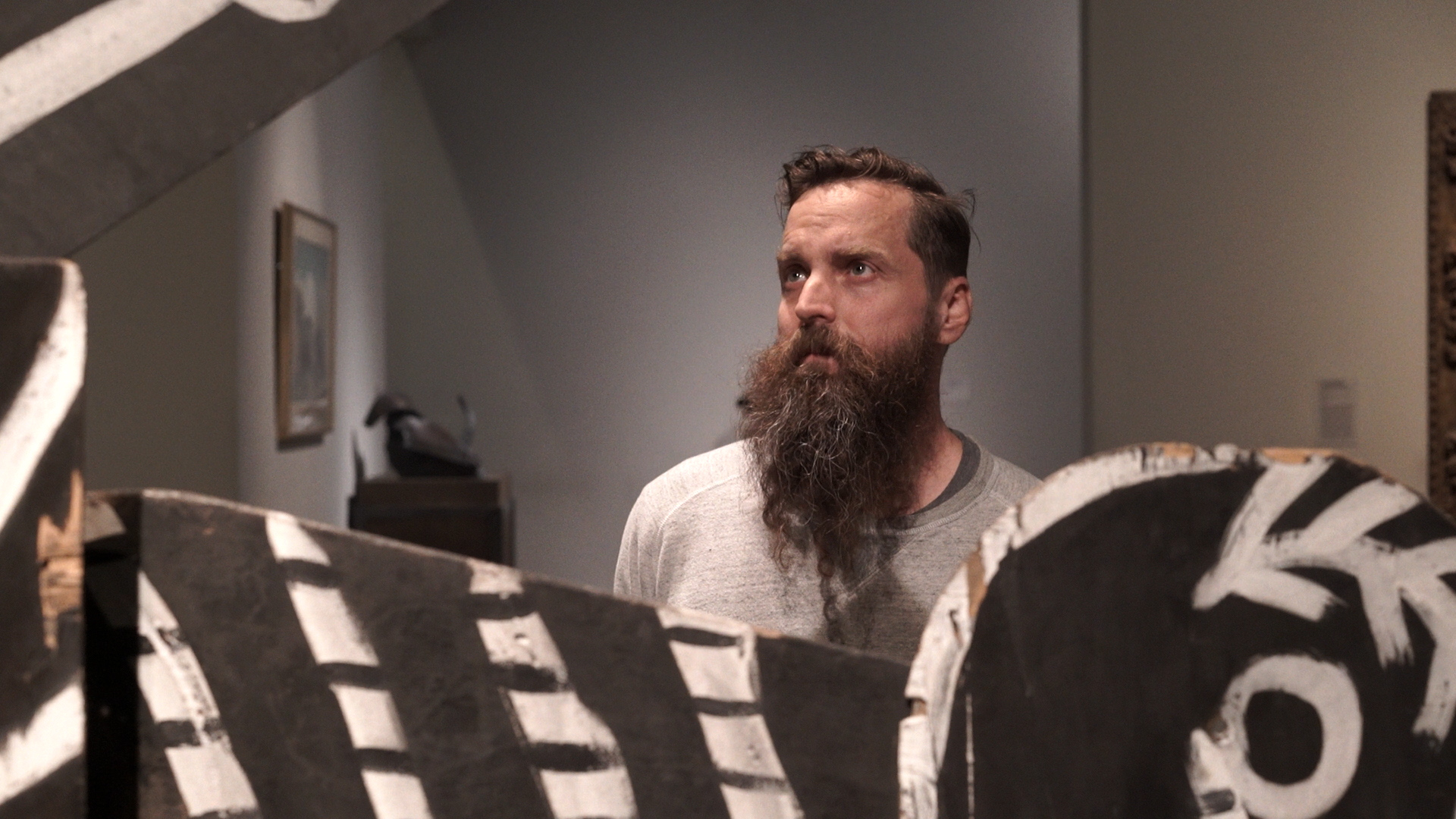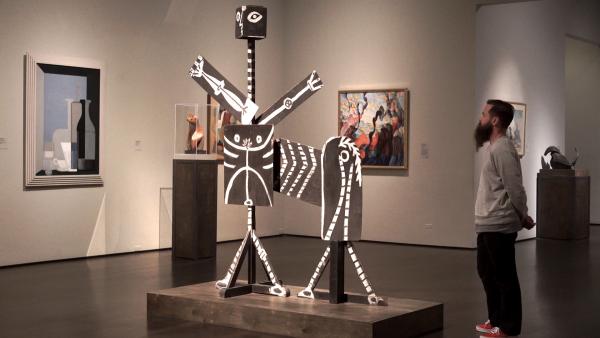Aaron Curry melds pop culture, surrealism, and modernism, creating a futuristic vision from historical styles of abstract art. His sculptures and paintings—made of wood, metal, fiberglass, or cardboard; silk-screened or spray-painted; often neon-colored and sometimes wonderfully oversized—draw upon familiar forms to suggest another space-time. Solo exhibitions of his work have taken place at CAPC Musée d’Art Contemporain de Bordeaux, France; the Rubell Family Collection, Miami; Lincoln Center for the Performing Arts, New York; and the High Museum of Art, Atlanta.
For Artists on Art, LACMA’s online video series featuring contemporary artists speaking on objects of their choice from our permanent collection, Curry selected Pablo Picasso’s Centaur (1955). Today, he speaks more about his connection to this work.
Do you remember the first time you saw Centaur?
I remember entering the gallery from the back side of this sculpture. It just had tremendous impact on me. At the time I was dealing with my own struggle to enter into making sculpture. I’d been a painter for most of my life when I came out to graduate school in Los Angeles.
You were struck by the back of it—what’s on the back?
Nothing, which I thought was really great. Well, there is something—you actually see how it is constructed. It’s almost like a silhouette, or it becomes a shadow of the sculpture in the front. When I first saw this it answered so many questions for me, because it exists somewhere in between a painting and a sculpture. I’m really interested in is this idea of a space that exists in between two dimensions and three dimensions, where it slightly leans either way, in and out of both, so that it becomes this awkward space. There is definitely a back to [Centaur]—a lot of sculptures don’t have that. It becomes alive with your interaction with it. There’s this energy to it, where you feel you can just see Picasso making it somehow in your head. You feel the movement of him. I’m just guessing, but maybe he didn’t know it was going to be a centaur in the beginning. Maybe it just became that.
Constant transformation seems to have defined Picasso, as a painter and a sculptor.
He’s like the Beatles to me. He is one of the greats because he always pushed himself, always changed. I think he wasn’t afraid to look at what was going on around him at the same time as he was working. To see what other artists were doing. He was open, absorbing so much from life and just putting it out there, all the time. It’s hard to always push yourself and to change things up. Especially as you become known as an artist, people looking at your work are used to a certain style or certain moves you make. I like that Picasso was able to take risks—that I really admire.

Are you following Picasso’s model, drawing from multiple creative sources to move forward in your own work?
I didn’t grow up around art. My understanding came first from popular culture. I used to think, if you want to be a great musician, you have to listen to so many different things, and take inspiration from different places. I started constructing sculptures out of found objects. They weren’t necessarily found, but I was going out and picking up certain objects that I thought I could make a sculpture from. I was doing a lot of musical sculptures—things that would make noise. I wanted to activate them somehow. So there were a lot of guitars parts and amplifiers, and they would be plugged in, creating static or loops. Then I went back and started looking at older sculptors—Barbara Hepworth, Henry Moore, Picasso, Matisse—and I realized that sculptures themselves can be turned on by just walking around them, because they change.
What pop sources are you looking to these days?
Today I look at things like CGI, or how people are doing artificial humans in movies now—you know that they are not real but they are real-looking. I like that they’re this new alternate reality in between two-dimensional and three-dimensional space. I think that imagination is a really beautiful thing, and imagination can be really weird.
Pablo Picasso’s Centaur is on view in the Ahmanson Building, Level 2. The conversation was edited and condensed for clarity.



